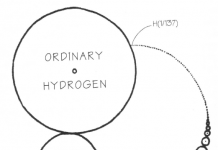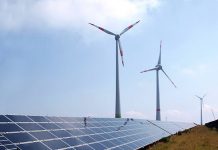by Tom Konrad CFA
The launch last year of NRG Energy’s YieldCo, NRG Yield (NYSE:NYLD), and the subsequent near-doubling of its price, set off a feeding frenzy on Wall Street.
YieldCos are companies which own clean energy assets and use the reliable cash flows from those assets to pay dividends to investors. Investors like YieldCos because many offer yields well above that available from most other stocks, including the fossil fuel-based master limited partnerships, upon which many YieldCos are modeled. Developers of clean energy projects find YieldCos attractive because the stock market provides capital for clean energy projects at a much lower cost than they have historically been able to obtain.
Since its listing, NRG Yield has been joined in U.S. markets by Hannon Armstrong Sustainable Infrastructure (NYSE:HASI), Brookfield Renewable Energy (NYSE:BEP), Pattern Energy Group (NASD:PEGI), NextEra Energy Partners (NYSE:NEP), and TerraForm Power (NASD:TERP). In Canada, YieldCo TransAlta Renewables (TSX:RNW) joined a number of established clean energy producers like Innergex Renewable Energy (TSX:INE), Capstone Infrastructure Corp (TSX:CSE) and Brookfield and Patten, which are listed in both New York and Toronto.
The flood has not stopped there. Analysts are now habitually asking large solar companies and other clean energy developers if they are considering forming a YieldCo. SunPower (NASD:SPWR) has been retaining more of its own solar farms in preparation for a possible YieldCo launch in 2015 or 2016. First Solar (NASD:FSLR), German developer PNE Wind, and Sempra Energy (NYSE:SRE) are all contemplating launching YieldCos as a home for some of their power generation assets.
Not all of these projects will come to fruition. First Solar’s management has commented that they can benefit from the YieldCo phenomenon without going to the trouble and expense of listing by selling assets to existing YieldCos.
Although not every clean energy developer needs to form its own YieldCo, U.S. investors cannot seem to get enough of the IPOs and secondary offerings. This can be seen in the low yields of U.S.-listed YieldCos, since yields fall as investor buying causes the stocks to rise. Most U.S.-listed YieldCos have annual dividend yields below 4 percent, while Canadian-listed YieldCos offer yields in the 5 percent to 6 percent range.
Because the cash flows from clean energy projects are still well above the amount YieldCos need to pay to attract investors, many project developers and aggregators of clean energy assets are currently working to develop their own YieldCos, sometimes at a much smaller scale than the ones listed above. Below are five that have come to my attention, listed in order of approximate invested capital.
Securities laws mean most only take investments from accredited (i.e., rich) investors, but recent changes in securities laws are allowing some to relax that requirement.
Joule Energy Reduction Assets (ERA)
Joule ERA is a private equity fund investing in energy efficiency and demand response assets; anything that saves energy is fair game. After management expenses, the ERA fund offers a very attractive 11 percent to 14 percent target yield, the first 6 percent of which is secured with reserve funds, and the balance comes from less reliable sources of yield. That said, even the base 6 percent yield makes the Joule ERA fund competitive with the most attractive publicly traded YieldCos, and the 5 percent to 8 percent upside above that seems like excellent compensation for the liquidity of a private equity fund.
Mike Gordon, Joule ERA’s fund manager, told me that ERA has significant opportunities for additional investments, so they are raising money from accredited investors and institutions. Unfortunately for most readers of this article, they have a $1 million minimum investment. Although Gordon says this minimum is flexible, it seems unlikely that Joule ERA would accept an investment in even the low-six-figure range.
You can find a presentation about the fund here. Note that the returns mentioned in that presentation are higher (8 percent secured yield plus 7 percent to 10 percent additional yield) than the ones outlined above. This is because they are presented before Joule’s management fees, and the numbers above are net of fees.
Grid Essence
Grid Essence is an independent power producer which owns 38.2 megawatts of operating solar farms in the United Kingdom and is currently developing another 21 megawatts. The company has been financing its development with a combination of bank debt from Deutsche Bank and convertible bonds, which it has been selling to accredited investors. The company is working on listing stock on the Toronto Stock Exchange, which it expects before the end of the year. At that point, the bonds will convert to common stock at a discount. The company’s target distribution after listing is 7 percent.
Because the offering is ongoing, the company was unwilling to answer questions at this time. If they did, their lawyers were concerned this article might be interpreted as a public solicitation by securities regulators. Other companies were willing to talk to me, but none of these have to deal with both U.S. and Canadian regulators.
Greenbacker
Greenbacker Group is a management company that has organized a YieldCo, Greenbacker Renewable Energy Company (GREC), to fund, own and operate a wide variety of renewable, energy efficiency and sustainability projects.
Greenbacker’s senior managing director initially agreed to talk to more about the details of the fund, but was not able to get to my questions in time for publication because of work on a prospectus supplement. I expect the supplement was necessitated by Greenbacker’s acquisition of a solar portfolio on September 2.
According to the company’s website and prospectus, GREC is a publicly registered but non-traded limited liability corporation that allows individual investors to participate for as little as $2,000. Although the YieldCo is able to offer its shares to non-accredited investors under the JOBS Act, it does not plan to take advantage of the JOBS Act’s reduced reporting requirements. The fund targets a high level of current income, currently 6 percent per annum, payable monthly.
Greenbacker intends to provide investors with an exit by either selling assets, listing the company on an exchange, or merging with another company in exchange for cash or publicly traded shares within five years. Investors also may redeem up to 5 percent of outstanding share
s annually at the fund’s net asset value minus some associated fees.
Power REIT Preferred Series A
Power REIT (NYSE:PW) is a tiny infrastructure REIT with a legacy asset in rail. The company has been diversifying into the real estate underlying renewable energy farms for the last two years. The small size ($1M to $2M) of its investments, along with uncertainty due to an ongoing civil case, has meant that financing for these investments was harder to come by than originally anticipated, so the company turned to a YieldCo-like structure of issuing preferred stock with a 7.75 percent coupon, now listed as PW.PA on the New York stock exchange. The offering size was $4.3 million.
While the yield of 7.75 percent is much more attractive than all other listed alternatives I am aware of, Power REIT’s legal situation adds significant uncertainty to the mix. I have written extensively about both Power REIT and its preferred shares elsewhere, and I believe that the upsides from the civil action far outweigh the possible downsides. But investors should make sure they are familiar with the situation before investing.
Juhl Renewable Assets
Pink-sheet-listed Juhl Energy (OTCBB:JUHL) is a wind and solar developer focused on community and behind-the-meter corporate projects. Its subsidiary, Juhl Renewable Assets (JRA), has been selling unlisted preferred stock with a 9 percent coupon to finance (alongside bank debt) the acquisition of community wind projects. Juhl plans to list both the JRA Preferred and Juhl common stock on the NYSE MKT exchange “as soon as possible,” which could be before the end of 2014.
The JRA Preferred offering is open to accredited investors with a modest $25,000 minimum investment. To date, the company has raised $4 million and hopes to offer additional tranches in the future at a rate of $30 million per year to fund future investments. JRA owns a handful of small wind projects with capacities of between 1 megawatt and 11 megawatts, including the recent purchase of two operating 1.62-megawatt, single-turbine wind projects for $4 million.
If the listing is successful, I would expect JRA Preferred stock to appreciate, since its closest comparable, Power REIT Preferred, has been trading at par with a lower coupon.
The Outlook for YieldCos
YieldCos are already transforming the clean energy development landscape by providing a new, low-cost source of capital. The flip side of this low cost of capital is unimpressive yields on the best-known U.S.-listed YieldCos. But the underlying economics of clean energy development still allow a wide variety of players listed, unlisted and in the process of planning IPOs to offer yields in the high single digits and beyond to investors who are willing to venture into the corners of U.S. exchanges (Power REIT Preferred) or to Canadian exchanges.
Accredited investors have a wide variety of potential high-yield investments to choose from, some of which are likely to be listed on exchanges in a matter of months, which will likely provide them with significant capital appreciation in addition to the underlying yield. The five listed above are not an exclusive list. Securities laws limiting advertising of unlisted securities mean that most such companies operate quietly, far from the public eye.
While the wealthiest and best-informed investors may be able to make the most profits from this transition of clean energy project financing from private hands to the public markets, in the end, everyone will benefit. YieldCos provide lower-cost capital which allows quicker and wider deployment of the technology we need to slow the growth of the harmful greenhouse gases which are already causing climate change.
Disclosure: Tom Konrad and/or his clients have long positions in JUHL, HASI, BEP, PEGI, RNW, INE, CSE, PW, PW.PA, and Grid Essence, and short positions in NRG Yield.
This article was first published on GreenTech Media, and is republished with permission.




